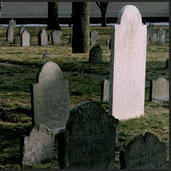 The European colonization of North America created a range of Christian societies. From the Spanish Catholics across the Southwest to the Puritans of Massachusetts, Christian communities emerged across the land that is now the United States.
The European colonization of North America created a range of Christian societies. From the Spanish Catholics across the Southwest to the Puritans of Massachusetts, Christian communities emerged across the land that is now the United States.
Christianity arrived in the western hemisphere with Christopher Columbus in 1492. From the beginning, Christianity and North American colonization were entwined. Franciscan friars laid the foundations of New World Catholicism in the Caribbean in 1493, in Mexico in the 1520s, in Florida in 1573, in New Mexico in the 1590s, and in California by the 1760s. Jesuits established French Catholic missions in Canada and the Great Lakes region following the founding of Quebec in 1608. These settlements followed the conquest of Native American lands, and their purpose was to evangelize idigenous peoples. The first Christian churches in North America were thus characterized by the encounter between Europeans and Native peoples. This encounter was frequently violent and marked by suppression and revolt. Inidgenous conversions to Christianity occurred in the context of massive power inequalities. Yet the results were distinctly American Christian communities. With few European settlers and overburdened clergy, the significant numbers of ingenious converts were able to reshape Catholicism to reflect and preserve their own cultures in ways that remain visible today.
From the perspective of Protestant England, both the Spanish and the French appeared as threatening religious and commercial rivals. Protestant groups that had emerged in the course of the Reformation in England settled along the east coast and played a decisive role in giving shape to what became the United States. These were settler societies, and the colonial churches reflected that fact: they transplanted English forms as accurately as possible and typically paid little attention to evangelizing Native Americans or incorporating indigenous converts. The first permanent settlement was at Jamestown in 1607, where the Church of England (or Anglicanism) became the established church. Throughout the colonial period, Anglicanism remained influential in the South. But despite having the support of the civil government, the power of the Church of England was limited, as its bishops governed from London and it was perennially short on local clergy. This situation created an opening for dissenting denominations such as Presbyterians and Baptists, who emerged in the South in great numbers over the course of the next century. These two denominations, along with the Methodists, played important roles in the development of Christianity in the South.
A second set of settlements was established by Congregationalists (or Puritans) in New England. In 1620, Plymouth was settled by the “Pilgrims,” a seperatist group who sought a refuge where they could practice their own form of Christian piety. A larger group of more moderate Puritans arrived in 1630 under the leadership of John Winthrop, founding the Massachusetts Bay Colony and then the Colony of Connecticut. These Puritans believed themselves to be in a covenant with God to create a Christian social order that would be a model that Christians in England could emulate. Congregationalism was established in the colony in the form of a Biblical commonwealth in which religious conversion and citizenship were closely linked. Dissenters like Roger Williams, who later became the founder of Rhode Island, frequently challenged the Congregationalist establishment, but it remained dominant throughout the colonial period and survived into the 19th century in both Connecticut and Massachusetts.
More varied settlements took root in the middle colonies. Dutch Calvinists dominated New Amsterdam (in what is now Manhattan), which was founded in 1624 and passed to the British in 1664. Dutch Reformed churches dotted the Hudson River Valley and the areas that became known as New York and New Jersey. Quaker leader William Penn founded the Pennsylvania Colony in 1681, where his belief in a personal “inner light” influenced his adoption of an unusual policy of religious tolerance. The colony became a haven for religious minorities from across Europe, and was known for its ethnic and religious diversity. Maryland was originally a land grant to George Calvert, who sought to build a refuge for English Catholics persecuted during the English Reformation. A relatively small number of Catholics flourished in Maryland, despite being outnumbered by Anglicans and Protestants and later laboring under legal restrictions.